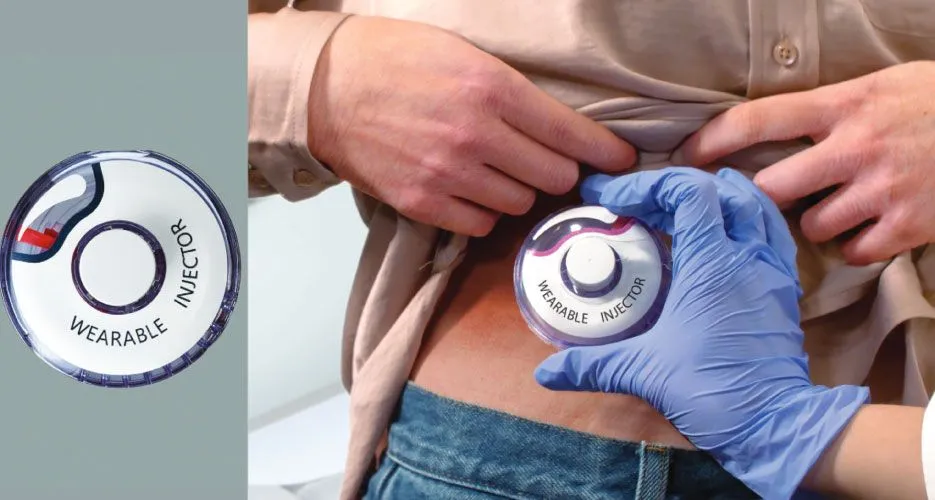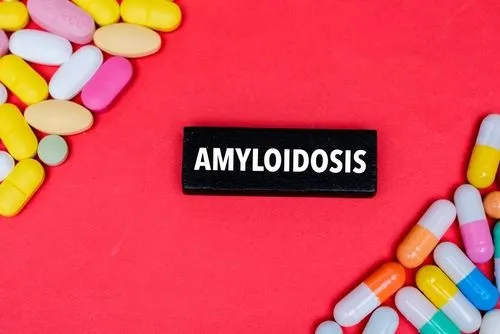ASH 2019: "Double Hit" Multiple Myeloma

What is "double hit" myeloma? Double hit myeloma is when a patient has two or more high risk myeloma genetic features at the same time. Martin Kaiser, MD is head of the Institute of Cancer Research in London and led a study of over 1000 myeloma patients in the United Kingdom. One of the goals of the Myeloma XI study is to review the genetic features of each newly diagnosed patient. The study has now has a median follow up of 5 years.
Dr. Kaiser shares the challenges of high risk genetics, especially for patients that have both the del17p and the gain of 1q.
In this very large trial, researchers reviewed the genetic features of newly diagnosed, transplant-eligible patients. Each patient had myeloma genetic testing as part of the study. He noted that the 1q gain is more significant than originally thought. In reviewing patients in the study, having an extra copy of the 1q chromosome was predictive of worse outcomes. These double hit myeloma patients are considered to be "ultra" high risk and tend to have their disease progress within 2 years, even after stem cell transplant.
In the COMMPAS study, we learned that having 3 copies of the 1q gain was not considered high risk, but 4 or more copies indicated higher risk disease. Similarly, all deletion 17 patients are not considered high risk. Patients who only had one missing chromosome of 17 did not behave in a high risk manner, but those who had both alleles missing were high risk.
He notes that the Emory group has done research showing that outcomes can be predicted for myeloma patients with the 1q gain who have had Velcade, Revlimid and dex (RVd). Dr. Kaiser noted these double hit myeloma patients tended to do better when the had a quad therapy using carfilzomib. However, even though their progression free survival was better when using carfilzomib, the overall survival for these patients is not better compared to standard risk patients. Additionally, double hit myeloma patients taking a third or fourth line of therapy do not do as well compared to other myeloma patients, who typically respond well to later therapies.
Dr. Kaiser suggests that all myeloma patients be genetically tested at diagnosis and that treatment be tailored to the needs of each patient. Still, it is clear that there is more work to be done for these double hit myeloma patients.
What is "double hit" myeloma? Double hit myeloma is when a patient has two or more high risk myeloma genetic features at the same time. Martin Kaiser, MD is head of the Institute of Cancer Research in London and led a study of over 1000 myeloma patients in the United Kingdom. One of the goals of the Myeloma XI study is to review the genetic features of each newly diagnosed patient. The study has now has a median follow up of 5 years.
Dr. Kaiser shares the challenges of high risk genetics, especially for patients that have both the del17p and the gain of 1q.
In this very large trial, researchers reviewed the genetic features of newly diagnosed, transplant-eligible patients. Each patient had myeloma genetic testing as part of the study. He noted that the 1q gain is more significant than originally thought. In reviewing patients in the study, having an extra copy of the 1q chromosome was predictive of worse outcomes. These double hit myeloma patients are considered to be "ultra" high risk and tend to have their disease progress within 2 years, even after stem cell transplant.
In the COMMPAS study, we learned that having 3 copies of the 1q gain was not considered high risk, but 4 or more copies indicated higher risk disease. Similarly, all deletion 17 patients are not considered high risk. Patients who only had one missing chromosome of 17 did not behave in a high risk manner, but those who had both alleles missing were high risk.
He notes that the Emory group has done research showing that outcomes can be predicted for myeloma patients with the 1q gain who have had Velcade, Revlimid and dex (RVd). Dr. Kaiser noted these double hit myeloma patients tended to do better when the had a quad therapy using carfilzomib. However, even though their progression free survival was better when using carfilzomib, the overall survival for these patients is not better compared to standard risk patients. Additionally, double hit myeloma patients taking a third or fourth line of therapy do not do as well compared to other myeloma patients, who typically respond well to later therapies.
Dr. Kaiser suggests that all myeloma patients be genetically tested at diagnosis and that treatment be tailored to the needs of each patient. Still, it is clear that there is more work to be done for these double hit myeloma patients.
about the author
Jennifer Ahlstrom
Myeloma survivor, patient advocate, wife, mom of 6. Believer that patients can contribute to cures by joining HealthTree Cure Hub and joining clinical research. Founder and CEO of HealthTree Foundation.
More on Treatment Advances
Trending Articles
Upcoming Events




Get the Latest Multiple Myeloma Updates, Delivered to You.
By subscribing to the HealthTree newsletter, you'll receive the latest research, treatment updates, and expert insights to help you navigate your health.











